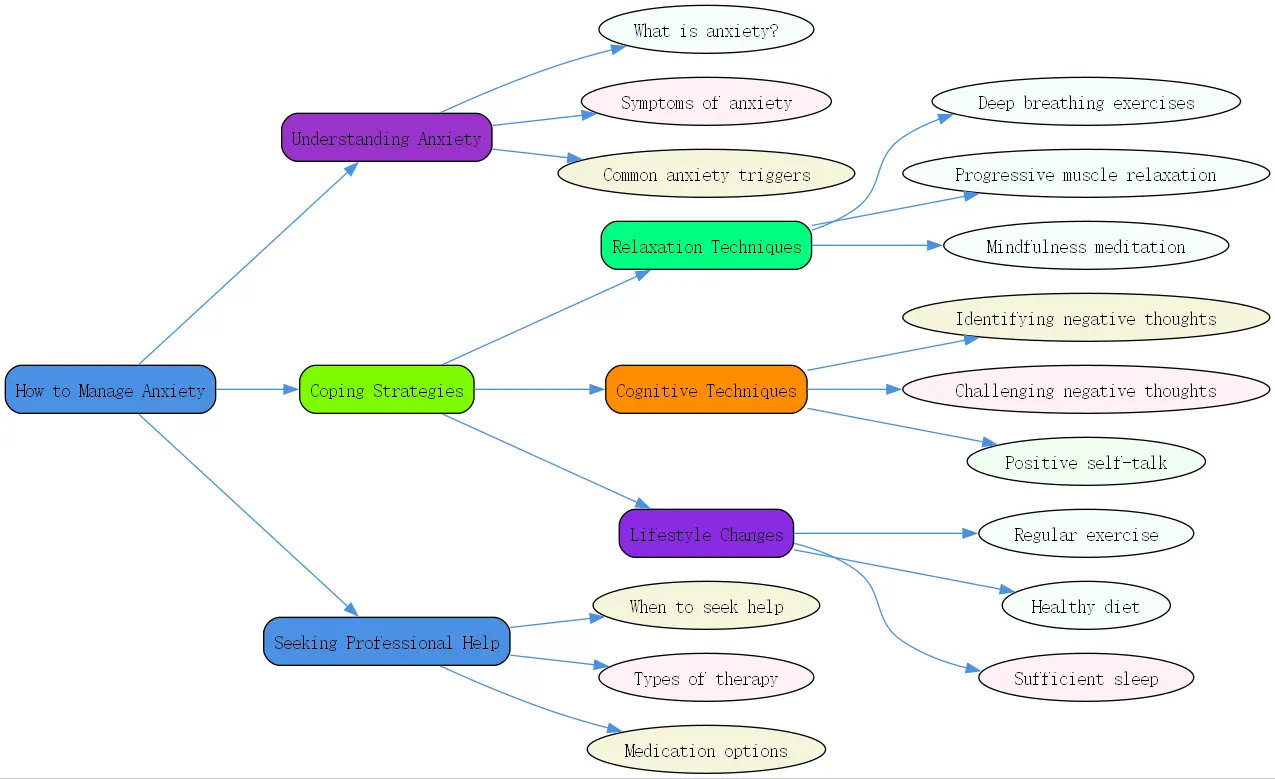Anxiety is a pervasive issue that affects millions of people worldwide, including those in high-pressure roles like product management. Understanding how to manage anxiety is crucial for maintaining both personal well-being and professional success. In this comprehensive guide, we’ll explore the nature of anxiety, its triggers, and effective strategies to manage it, with a special focus on product managers and specific situations like driving anxiety.
Understanding Anxiety
Anxiety is more than just feeling stressed or worried. It’s an intense, excessive, and persistent fear about everyday situations. The Mayo Clinic defines generalized anxiety disorder as severe ongoing anxiety that interferes with daily activities. Physical symptoms can include a rapid heartbeat, accelerated breathing, sweating, and fatigue.
For product managers, anxiety can manifest in unique ways. As a product manager at BrainTalking, I’ve experienced firsthand how anxiety can impact performance. Symptoms like a dry mouth, difficulty swallowing, and a feeling of heaviness on the shoulders are common. These physical manifestations can make it challenging to think clearly and perform optimally in high-pressure situations.
Anxiety Triggers Specific to Product Management
Product managers face a unique set of challenges that can trigger anxiety. Understanding these triggers is the first step in learning how to manage anxiety effectively:
1. Interviewing: The rigorous and often unpredictable nature of product management interviews can be a significant source of anxiety. Being expected to think on your feet and demonstrate expertise across various domains can be daunting.
2. Role Fit: With the growing specialization in product management, finding the right fit for your skills and experience can be anxiety-inducing. Imposter syndrome is common when transitioning to a new product management role.
3. Stakeholder Management: Balancing the needs of various stakeholders while having limited authority is a constant challenge. The pressure to influence without direct control can be a significant anxiety trigger.
4. Product Launches: The responsibility of launching a product and dealing with potential fallout can create intense anxiety. The fear of failure or negative reception can be overwhelming.
5. Time Management: Overwhelming to-do lists and constant demands from various teams can lead to anxiety about meeting deadlines and expectations.
6. Interpersonal Relations: Dealing with microaggressions, trust issues, or difficult personalities in the workplace can be a constant source of stress and anxiety.
7. Performance Anxiety: The pressure to be creative, strategic, and innovative on demand can lead to anxiety, especially when experiencing creative blocks.
8. Cognitive Load: The constant need to learn and adapt to new technologies, coupled with the responsibility of making numerous decisions, can lead to decision fatigue and anxiety.
General Anxiety Triggers
In addition to work-specific triggers, product managers, like everyone else, are susceptible to general anxiety triggers:
1. External Factors: Family issues, health concerns, financial stress, and global events can all contribute to anxiety.
2. Self-Care: Poor diet, lack of sleep, inadequate exercise, and high screen time can exacerbate anxiety symptoms.
3. Mindset: A fixed mindset, learned helplessness, and a tendency to blame or shame oneself can fuel anxiety.
Can You Succeed as a Product Manager with Anxiety?
The good news is that having anxiety does not preclude success in product management. Many successful product managers navigate their careers while managing anxiety. The key is to reflect on why you’re passionate about product management and identify your strengths and areas of mastery.
At BrainTalking, we believe that understanding your motivations and strengths can help you build resilience against anxiety. Focus on the aspects of the role that energize you and allow you to experience flow. This positive focus can help counterbalance anxiety-inducing elements of the job.
How to Manage Driving Anxiety
While not directly related to product management, driving anxiety is a common issue that can impact professional and personal life. Here are some strategies to manage driving anxiety:
1. Cognitive Behavioral Techniques: Challenge and reframe negative thoughts about driving. Replace catastrophic thinking with realistic assessments of risk.
2. Relaxation and Breathing Exercises: Practice deep breathing or progressive muscle relaxation before and during drives to reduce physical symptoms of anxiety.

3. Gradual Exposure: Start with short, easy drives and gradually increase the duration and complexity of your routes.

4. Mindfulness: Stay present and focused on the act of driving rather than getting lost in anxious thoughts.
5. Preparation: Plan your route in advance, ensure your vehicle is in good condition, and allow extra time to reduce stress.
Building Your Anxiety Management Toolbox
To effectively manage anxiety, whether in product management or other areas of life, it’s essential to build a personalized anxiety management toolbox. Here are some tools to consider:

1. Mindfulness and Meditation: Regular practice can help you stay grounded and reduce overall anxiety levels.
2. Physical Exercise: Regular physical activity is a powerful anxiety reducer. Even short walks can make a difference.
3. Cognitive Behavioral Therapy (CBT): This evidence-based approach can help you identify and change negative thought patterns.
4. Time Management Techniques: Tools like the Pomodoro Technique or time-blocking can help manage overwhelming to-do lists.
5. Journaling: Writing down your thoughts and feelings can help process anxiety and identify patterns.
6. Breathing Exercises: Techniques like box breathing or 4-7-8 breathing can quickly calm your nervous system.
7. Professional Support: Don’t hesitate to seek help from a mental health professional if anxiety is significantly impacting your life.
8. Peer Support: Connect with other product managers who understand the unique pressures of the role.
Remember, learning how to manage anxiety is a process. What works for one person may not work for another, so be patient as you discover the most effective strategies for you.
Q: How can I manage anxiety during high-pressure product launches?
A: Managing anxiety during product launches requires a combination of preparation and self-care. First, ensure you have a detailed launch plan with clear responsibilities and contingencies. Practice visualization techniques to mentally rehearse the launch, including potential challenges. Implement a regular self-care routine leading up to the launch, including adequate sleep, exercise, and stress-reduction activities. During the launch, use quick anxiety management techniques like deep breathing or the 5-4-3-2-1 grounding exercise. Finally, remember to celebrate small wins and maintain perspective – no launch is perfect, and there’s always an opportunity to learn and improve.
how to manage anxiety mind map





